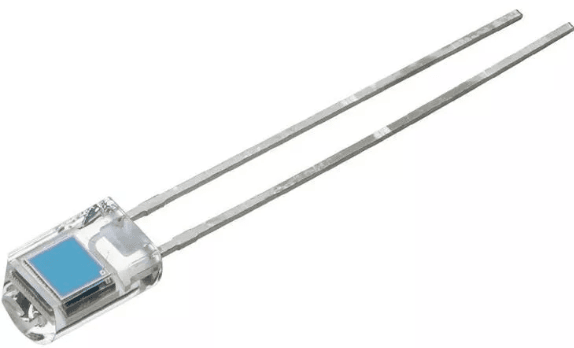Lab measurements and graphs of the new generation of solar cells of IXYS (KXOB25-05X3F) intended for energy harvesting and low-power applications.
The new generation of IXYS tiny photovoltaic cells from the Korean manufacturer is the KXOB25 family. They are fabricated with high-performance monocrystalline cells and tiny encapsulation.

The Solar Cell KXOB25-05X3F
The KXOB25-05X3F is an affordable solar cell intended for energy harvesting or low-power applications. The unit price is around 3€.
The part KXOB25-05X3F is an upgrade from the KXOB22-04X3F, which is obsolete since December 2018 by a manufacturer’s notice.
The official datasheet doesn’t provide many useful data about indoor behavior. Only the specs at 1 sun = 100 mW/cm²… but at indoor???
According to the original information:

The solar cell is built from monocrystalline silicon, which has higher efficiency than thin-film, amorphous or polycrystalline cells. The size is still small, 23mm x 8mm x 1.8mm.
Other alternatives
If you are considering this KXOB25-05X3F solar cell, a similar part is the Amorton AM1456 from Panasonic. I measured it some time ago for outdoor light conditions and now I compare it with the new Ixys generation. Under my consideration, the new Ixys KXOB25-05X3F is a bit ahead in performance and in size. Here the table

Ixys also produces the KXOB25-14X1F, which is pretty similar to the KXOB25-05X3F but it changes the internal connections. What is the difference?
Both parts have 3 solar cells inside, KXOB25-14X1F connects them in parallel and KXOB25-05x3F connects them in series. So for indoor operation, I would go for the series connected-cells, because we get more voltage at low illuminations.

Measurements
The measurements of the KXOB25-03x03F have been carried out with 3 white LED inside a dark box, to avoid external interferences.
The setup I used to characterize the solar cell can be seen in the picture below and it is explained more in detail in the other article.

The power curves for indoor light conditions between 500 lux and 1000 lux:

I split the 3.000 and 15.000 lux in a different graph, because if not, it can not be seen the lower light intensities.

Applications
I used this solar cell to build an integrated solar energy harvester, which is able to generate around 15uW at more than 1.8V in continuous mode under 680 lux.
Here is the final prototype! 🙂


I hope this info would be useful for you. Any comments, feedback and suggestions are welcome below in the comments.




